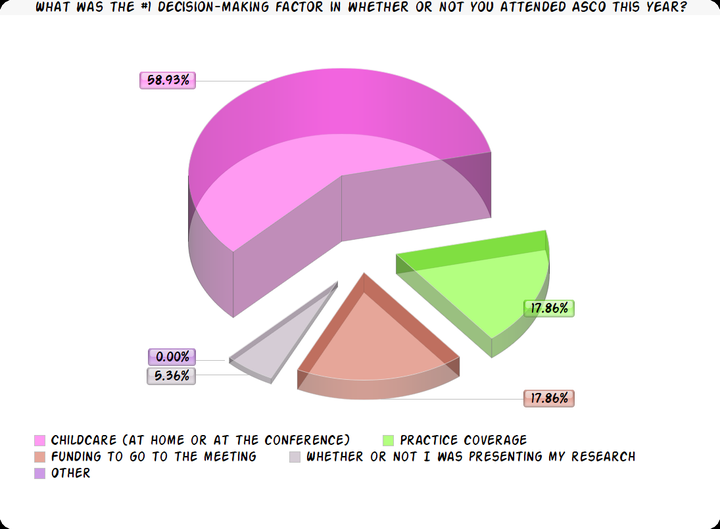
As a physician and mom, I hate the work culture that generates the glass ceiling for women.
Like many professional environments, Medicine is a hierarchical culture dominated by men. The leadership positions are mostly filled by men- including the hospital CEOs, department chairpersons, and medical school deans. This reality begs the question: if nearly half of medical school graduates are women, why don’t we see more female physicians at the top?
The answer is complex, and is a combination of factors wherein workplace culture makes it difficult for women to become leaders. I recently learned a simple way to approach this common problem, while attending the 2016 American Society of Clinical Oncology (ASCO) Annual Meeting in Chicago.
Here’s how to improve work culture for women:
1. Gather the hard data.
2. Propose solutions.
3. Implement changes.
Allow me to set the background for you: Academic meetings are very important for physicians to attend for many reasons.
Firstly, it’s a great way to stay in the loop regarding advances in the medical field. Important new ideas are shared at these meetings, including medical and drug developments. For example, Joe Biden spoke at the 2016 ASCO Annual Meeting regarding his Cancer Moonshot Initiative, because it’s the largest and most important cancer meeting in the world with an attendance of nearly 40,000.
Secondly, doctors try submit their research to a conference, and if accepted, are invited to present their findings. Speaking at a meeting is considered a great honor and therefore a great way to further one’s career.
Thirdly, many leadership positions require the physician to attend a conference because that’s where the medical committees meet. So if a physician wants to obtain a leadership position, they often need to attend the meeting.
Fourthly, a medical conference is the optimal place for doctors to network.
As an oncologist, I really wanted to go ASCO’s Annual Meeting this year, which took place in Chicago. As a Mom of three (and wife to a physician), I had difficulty arranging childcare and had to bring my kids along if I wanted to go.
When I arrived at the conference with my kids in tow, I wondered how well were women represented? How difficult was it for other mothers to attend the meeting despite its importance? I decided to conduct an informal poll of my female oncologist colleagues (many also mothers).
So I embarked on Step 1 of my formula: Gather information.
I posted the question:
“What was the most important decision making factor in whether or not you attended the Annual Meeting this year?”
Nearly sixty percent of the 56 women polled reported that the number one decision-making factor in whether or not they attended the Annual Meeting was childcare.
I was shocked! What about other important considerations like whether or not they were presenting their research at the meeting? Or whether they could get travel funding? It turns out that none of these were as important than childcare.
So, I shared my findings on my ASCO blog.

Then, I took Step #2: Propose solutions.
I recommended that ASCO track the gender of all its attendees. ASCO does track a lot of information regarding the registrants at the meeting, including primary professional role (physician, researcher, nurse, etc) and country representation (10 different countries are listed). But ASCO has never collected the hard data of what percentage of its attendees are women.
Given the importance for women doctors to attend the conference- with the goals as above of professional development, education, and networking- shouldn’t we pay attention to how many women are actually going? How else can we properly characterize the problem of so few women at the top in Medicine? Tracking gender at a conference is quite easy, because all attendees have to register beforehand anyway.
Another idea I proposed was for ASCO to offer childcare services at their conference. If childcare is the number one concern for many female doctors, perhaps alleviating this stress would encourage more women to attend.
Step #3: Implement changes.
Within days of my publishing my findings, ASCO reached out to me. They publically agreed to proactively address the above issues. They will now be tracking attendees’ gender on all registrations for their annual meeting. ASCO promised they are investigating childcare options for the conference and will make conference rooms more readily available for nursing mothers.
Wow! I was happily shocked how quickly an organization as large as ASCO mobilized to my call to action.
While the childcare struggle may seem obvious to many parents, this issue simply has not been studied enough to date. Kudos to ASCO for taking this seriously. Here’s to hoping that the glass ceiling shatters along with the real work culture changes we so desperately need.
